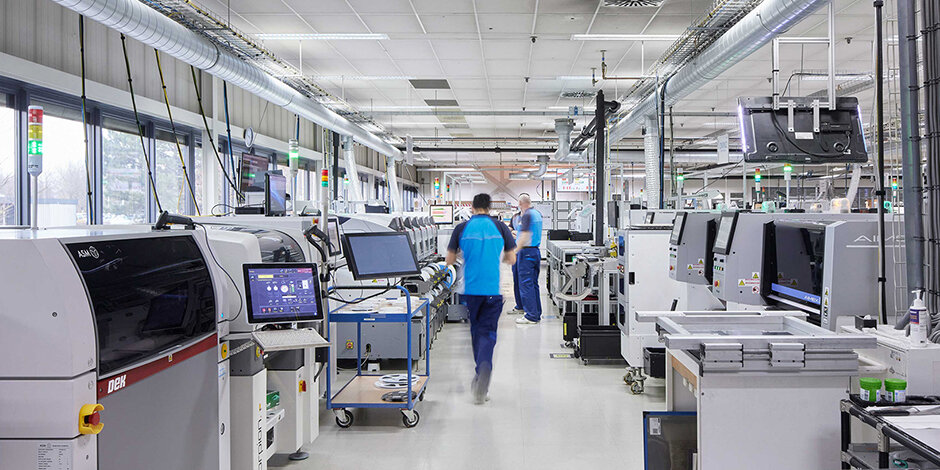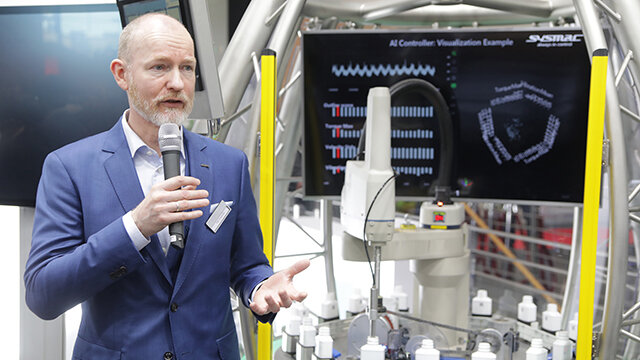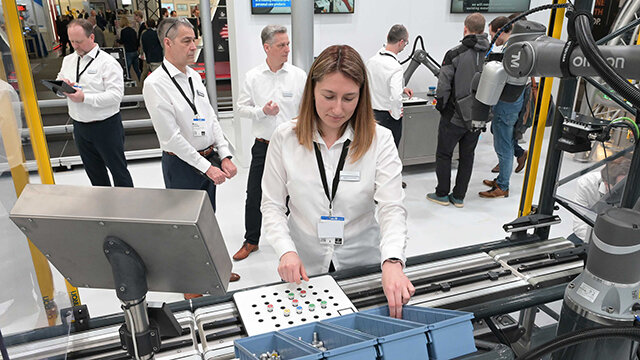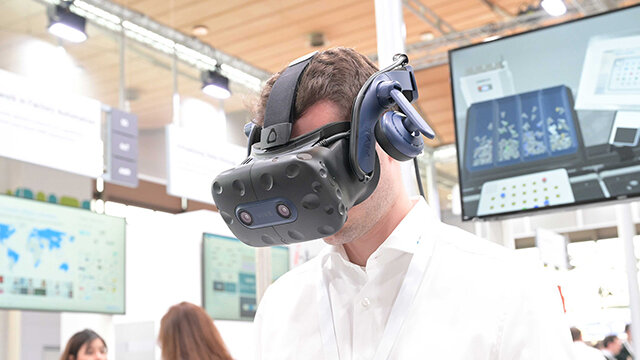
гЂЂ
The growing clamour for workplace AI, generated by the unveiling of consumer-centric applications like the chatbot ChatGPT, is eclipsing a prospect that might be even more exciting: the vast potential of AI on the factory floor.
Large language models and AI image generators have impressed us with their remarkable ability to generate content, spanning novels, spreadsheets, news clips, music videos, visual art and even deepfakes. However, we inhabit a material world. With the planet's population rising, the demand for fundamentals -- including food, clothes, cars, homes and medicine -- will grow. Producing these essentials with minimal environmental impact and improved labour conditions is vital to fostering sustainable progress.
This is where industrial AI has the potential to enhance the future of the planet.
Through the fields of data science and AI, large unstructured datasets from industrial processes can be analysed to uncover inefficiencies and virtually simulate and test solutions, thereby optimising production. This aids in reducing costly and wasteful defects, prolonging the lives of industrial equipment and curbing energy and resource consumption, ultimately leading to greener factories.
"Regardless of the industry, AI can help produce high-quality, defect-free products at a lower cost, minimising energy consumption and labour," says Tim Foreman, OMRON's research and development manager.

AI can also make workers smarter.
"Simply put, the skilled operator trains the machine, and the machine trains the unskilled operator. I cannot imagine a single machine or operator that will not benefit from AI in the future. So there's a really big potential out there."
Nevertheless, the number of companies currently adopting AI on the factory floor remains limited. For many players in the industrial AI sector, the pressing concern is how to accelerate uptake.
гЂЂ
Foreman highlights several bottlenecks impeding the integration of AI within factory operations, despite the growing sense of urgency from industry leaders keen to embrace the shift.
The primary challenge arises from the age of existing machines in factories, which often lack features necessary for AI, such as modern communication capabilities. Across the US, the average age of manufacturing equipment is 20 years. Upgrading or replacing antiquated equipment to accommodate machine learning represents a considerable commitment. The second hurdle revolves around a reluctance to share data and concerns about data security, particularly for companies requiring external expertise. The third issue is a scarcity of immediately useable data for algorithms.
"Very often factory floor data is being generated with the point of view of 10 or 15 years ago, and not with data science in mind, so you always run into the problem that the data is not really complete," says Foreman. "You then need to conduct data cleaning, which is costly and challenging. We find that AI projects often progress no further than the initial stage of data cleaning."
Despite these challenges, Foreman believes that AI can bring additional value, improve energy efficiency, and bring us closer to zero-defect manufacturing, consequently leading to cost savings and safeguarding a company's reputation.
гЂЂ
Over the years, OMRON has continuously developed its core technology, "Sensing & Control + Think", which underlies all of its businesses and is designed to maximise the value of the firm's contributions to society. First pioneered in 2011, the "+ Think" category refers to technologies that impart human intelligence to machines and expand the scope of AI in products and services.
Foreman reveals examples of this technology in action, including one automotive plant where OMRON's data scan analysis helped uncover issues causing production stoppages. This intervention not only saved tens of thousands of euros by preventing the disposal of defective products but also reduced downtime by five per cent.
Elsewhere, in a high-tech device manufacturing plant in the Netherlands, OMRON used data science to unearth a configuration error in production that had been contributing to defects. Even a marginal reduction of 0.01 per cent in such defects generates critical savings, particularly in sectors like pharmaceuticals or automotives, where faulty production can potentially incur losses running into the millions of euros.
In a separate scenario, OMRON helped visualise data and use AI within an Italian automotive factory to fully automate line inspection. This automation enabled operators to quickly discover and deal with problems at irregular hours, providing them with peace of mind. OMRON says such benefits reflect the firm's vision for AI to help machines and people work more effectively together, improving worker autonomy, motivation and comfort.
"We are currently experimenting with AI-driven machines that ask operators to assemble products and record how they do it to discover the smartest way of performing this task, so that this technique can be taught to other operators." says Foreman.

Most of these successful projects have deployed OMRON's AI Controller, billed as the world's first AI solution that operates "at the edge", with the controller recognising patterns based on process data collected from the production line.
Edge AI is a combination of edge computing and artificial intelligence that allows data processing at the edge of a network instead of a centralised location like a cloud computing facility. By nature, edge solutions can also help avoid off-site security risks.
Central to OMRON's AI solution, such edge-based functionality leverages the company's traditional competence in fast, accurate, repetitive machine control on the shopfloor level. Collaborating with enterprises in diverse sectors, encompassing digital, environmental mobility, food and consumer goods, medical care and logistics, OMRON is actively shaping a wide array of industrial AI solutions.
Besides these collaborations, the Japanese company is engaging in national-level projects aimed at accelerating AI's integration into the industrial landscape. OMRON has been selected to participate in the Moonshot Research and Development Program1, a Japanese government initiative that seeks to develop AI robots that will help humans with research. By 2030, the project team aims to develop AI robots that can publish studies in peer-reviewed journals, and in high-impact journals by 2040.
In April, German Chancellor Olaf Scholz visited the OMRON booth at the Hannover Messe 2023 trade fair. Scholz came to observe the company's automation technologies and gained a first-hand experience of how robotics and AI can support flexible learning for assembly lines and virtual testing and operator training. The German Federal Government has recently boosted investments in the sector, aiming to encourage AI product innovation, with a commitment of €5bn to 2025.

While still in their infancy, data science and machine learning are emerging as the next significant advancements for various industries. With global technology leaders like OMRON actively accelerating investments and pioneering future developments, the prospect of a material world shaped by AI may be closer than anticipated.